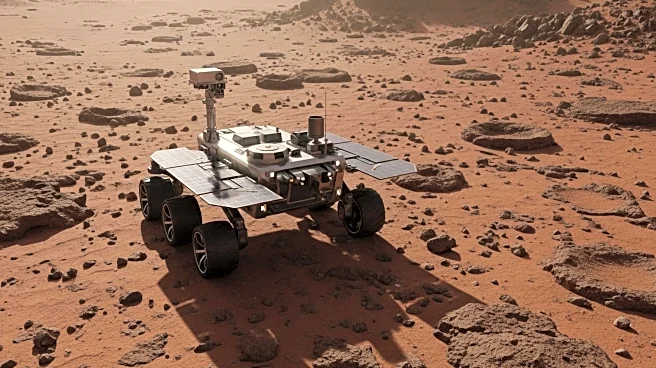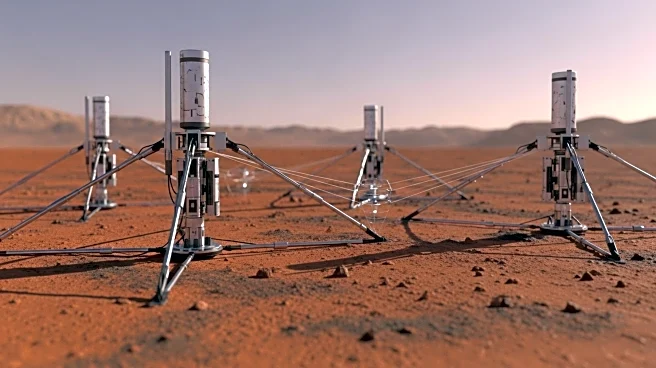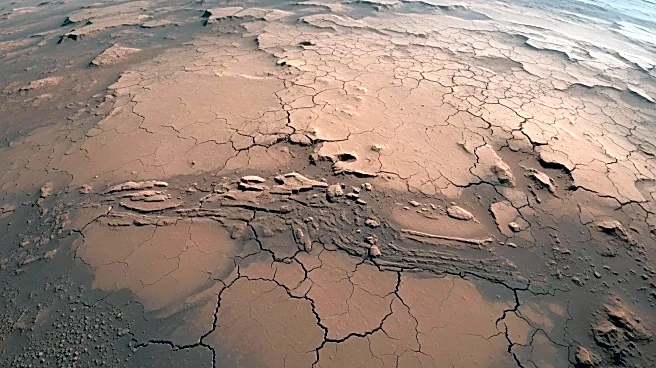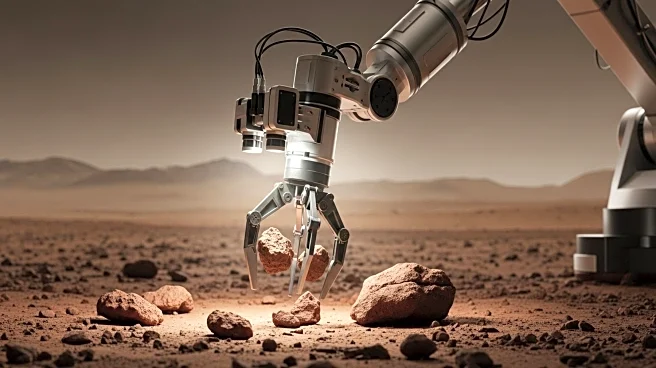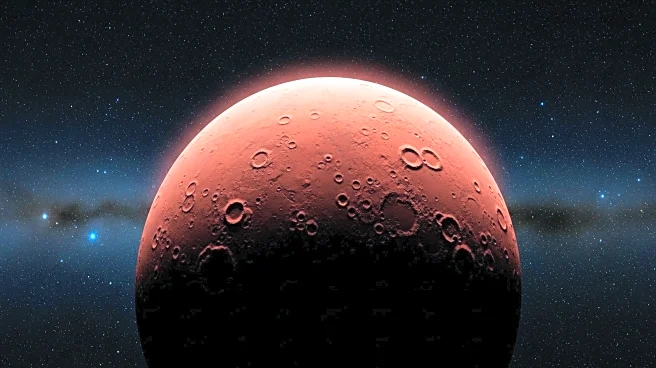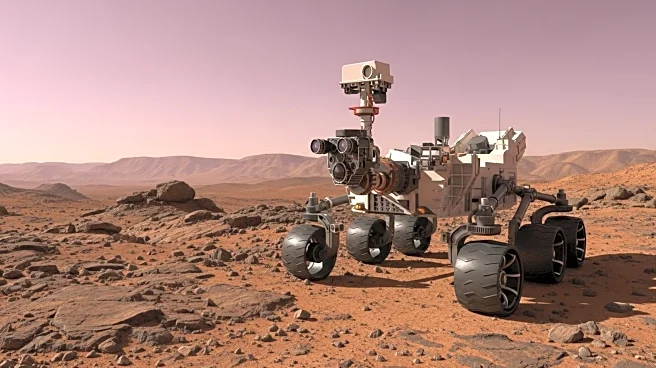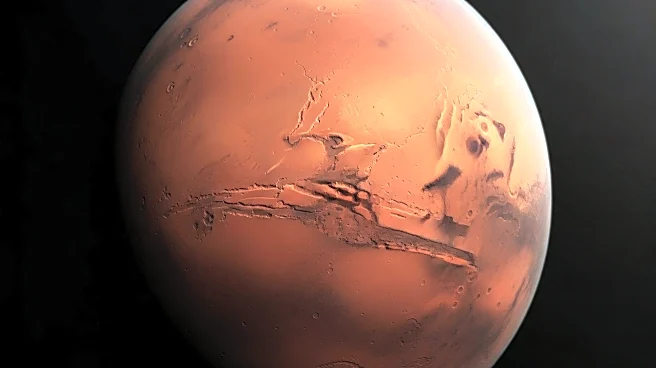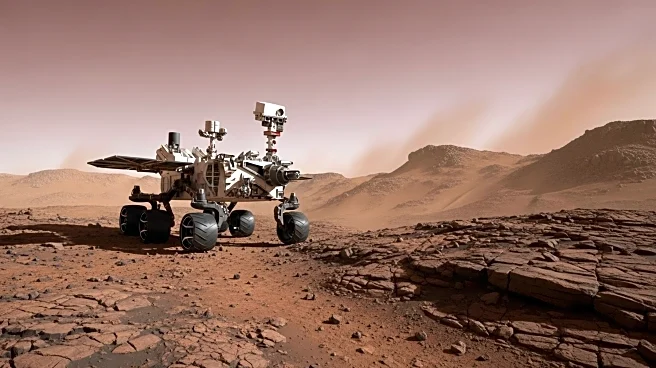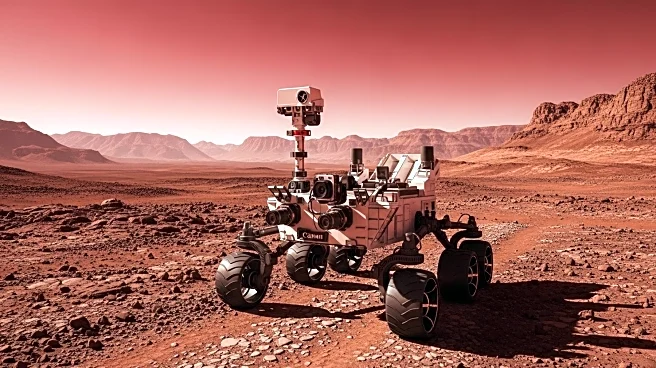What's Happening?
NASA's InSight lander has revealed significant findings about Mars' interior, detecting debris from ancient impacts scattered throughout the planet's mantle. These impacts, occurring 4.5 billion years ago, injected fragments deep into Mars, creating a unique geological record. The study, published in Science, highlights Mars' sluggish mantle evolution, preserving these ancient features unlike Earth, where tectonic activity erases such evidence.
Why It's Important?
This discovery provides valuable insights into Mars' geological history and its formation processes. Understanding Mars' mantle composition aids in comparative planetology, offering clues about other rocky planets lacking tectonic activity. The findings could inform future Mars exploration missions and enhance our knowledge of planetary evolution, potentially impacting astrobiology and the search for life.
What's Next?
Researchers will continue analyzing InSight's data to uncover more about Mars' interior and its ancient impacts. Future missions may focus on drilling deeper into Mars' mantle to study these debris fragments directly. International collaboration could expand research efforts, utilizing advanced technology to explore Mars' geological features further.
Beyond the Headlines
The study of Mars' mantle raises questions about planetary preservation and the role of tectonics in shaping planetary surfaces. It challenges assumptions about planetary evolution and encourages exploration of other celestial bodies with similar characteristics. Ethical considerations regarding the prioritization of space exploration over terrestrial issues may arise.
